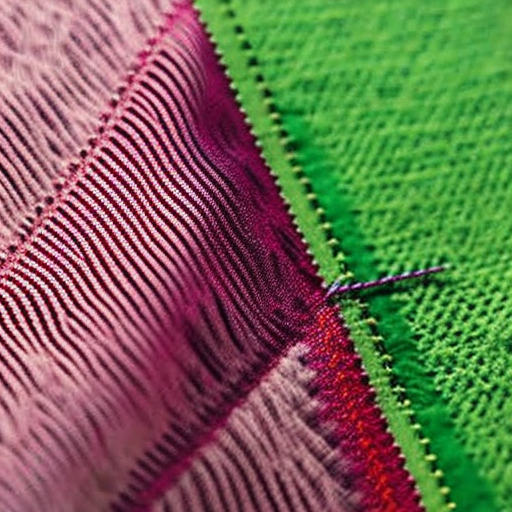
When it comes to sewing, stitches per inch (SPI) is an essential term that every sewist needs to be familiar with.
SPI refers to the number of stitches that are made within the span of one inch of fabric. The SPI value is an
important factor in determining the overall quality, strength, and appearance of a sewn fabric.
Why is SPI important?
The number of stitches per inch affects various aspects of a sewn garment or item. It determines the strength of
the seams, the durability of the material, and how secure the pieces of fabric are held together. A higher SPI
provides more reinforcement and ensures that the stitches withstand the test of time.
Additionally, the SPI value greatly impacts the appearance of a sewn item. Different SPI values create different
effects on the visual appeal of the piece, affecting factors such as seam smoothness and overall texture. For
instance, a high SPI creates smaller stitches that offer a more refined look, while a low SPI results in larger
stitches that give a more rustic, handmade feel.
How to measure SPI?
Measuring the stitches per inch in a sewing project is relatively simple. All you need is a ruler or a measuring
tape and a sample piece of fabric with the sewn stitches. Here’s how you can measure SPI:
- Select a one-inch section of your fabric, preferably in an area that has a consistent stitch pattern.
- Place the ruler or measuring tape horizontally on the fabric, covering the one-inch distance.
- Count the number of stitches that fall within the inch and record the value.
- Repeat these steps in different areas of your project to get an accurate average SPI.
What is the ideal SPI?
The ideal stitches per inch value may vary depending on your specific project, fabric type, and sewing machine.
However, as a general guideline:
- A SPI of 8-10 is recommended for lightweight and delicate fabrics like silk or chiffon. This provides a
secure hold without causing excessive tension on the fabric. - For medium-weight fabrics such as cotton or linen, aim for a SPI range of 10-12. This strikes a balance
between durability and a visually appealing finish. - Heavier fabrics like denim or upholstery materials usually require a SPI of 6-8 to ensure strong and sturdy
seams.
However, it’s crucial to consider the project’s intended use and the specific requirements of the fabric type. A
delicate, decorative project might benefit from a smaller SPI for more intricate stitching, while a heavy-duty
item may require a higher SPI for added strength.
Conclusion
Understanding and mastering the concept of stitches per inch is vital for any sewing enthusiast or professional.
It allows you to achieve the desired strength, durability, and aesthetic appeal in your sewing projects. Finding
the appropriate SPI for each fabric and project can greatly enhance the quality of your finished creations. So,
next time you sit down to sew, don’t forget to take SPI into account!
Remember, every stitch counts!





Wow! What an interesting topic! I’ve never thought of how the number of stitches per inch has an impact on sewing projects. #handmade
Sewing stitches per inch definitely makes a difference in how the final product turns out. I’ll have to keep this tip in mind!
Interesting observation; it’s amazing how a detailed factor like number of stitches per inch can positively or negatively affect a handmade project!
Definitely important to pay attention to. After all, the quality of stitches you sew translates into the quality of work you produce!